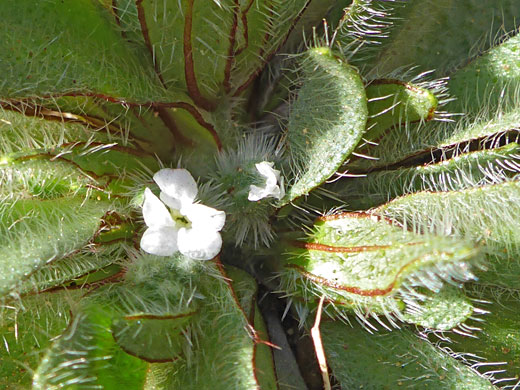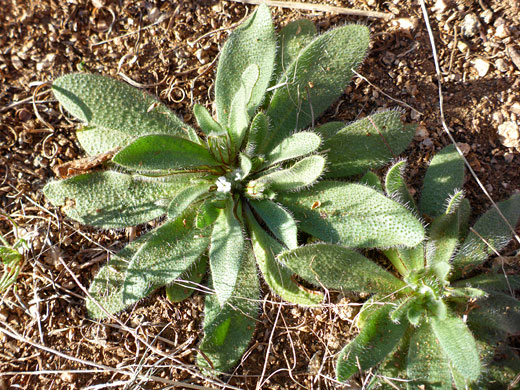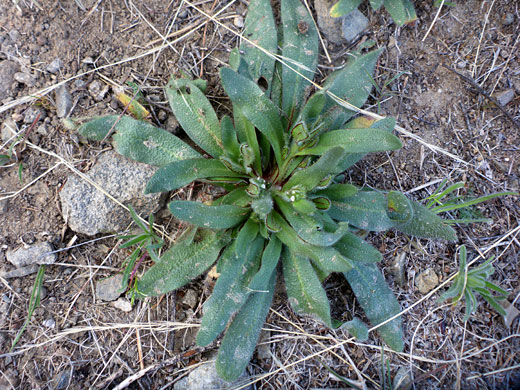Plagiobothrys Arizonicus, Arizona popcorn flower
Plants > Wildflowers > Boraginaceae > Plagiobothrys Arizonicus
Common names:
Arizona popcorn flower, bloodweed
Family:
Scientific name:
Plagiobothrys arizonicus
Main flower color:
Range:
Arizona, California, and small adjacent parts of Nevada, Utah and New Mexico; concentrated in mid elevation desert regions
Height:
Up to 15 inches
Habitat:
Woodland, scrubland, semi-deserts; often sandy locations, up to 6,500 feet
Leaves:
Alternate, linear, bristly, up to 2 inches long
Season:
March to May
Plagiobothrys arizonicus can be distinguished from similar species by the red staining along the edges and midveins (on the lower surfaces) of its stem leaves. Stems are also reddish, especially towards the base, as are the roots. Calyces and stems are covered by sharp, rigid, spreading bristles. Leaves grow in a rosette at the base and along the stem, at alternate intervals. Leaf surfaces are rough, and the margins, and undersurfaces, are hairy.
Both the green, five-lobed calyx and the white, five lobed corolla are small, around 0.1 and 0.2 inches long respectively; the corolla lobes are about as long as the corolla tube. The tiny appendages at the base of the corolla lobes are pale yellow. One flower produces two nutlets.
Both the green, five-lobed calyx and the white, five lobed corolla are small, around 0.1 and 0.2 inches long respectively; the corolla lobes are about as long as the corolla tube. The tiny appendages at the base of the corolla lobes are pale yellow. One flower produces two nutlets.
All Contents © Copyright The American Southwest | Comments and Questions | Contribute | Site Map





